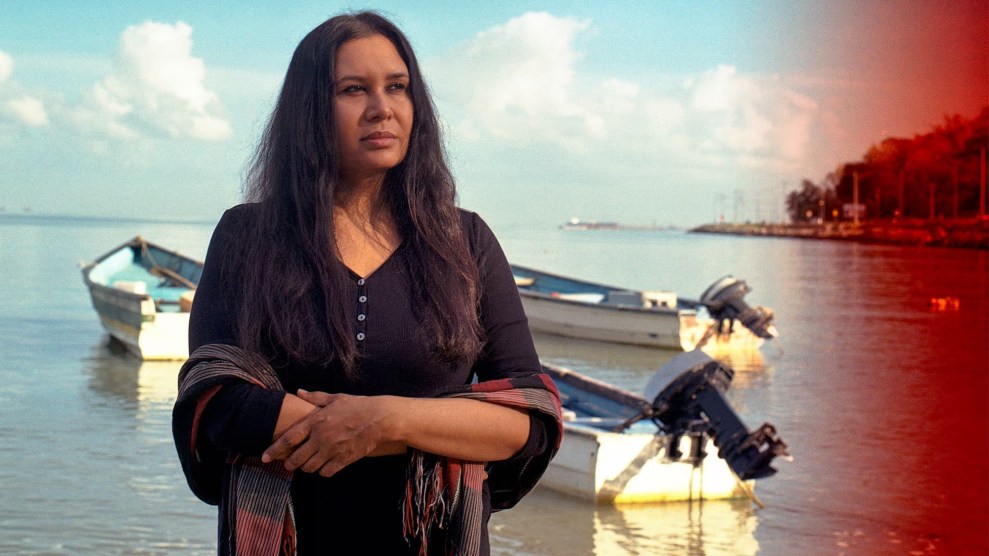Mark Harris is like a lot of 22-year-olds. He designs websites. He surfs Facebook. He has a blog. But it’s a pretty powerful blog. Last May in Mt. Lebanon, Pennsylvania, Harris came out of nowhere to beat a five-term Republican state House incumbent for the party nomination. The local paper called the defeat “stunning.” But for Harris, it wasn’t such a surprise. A lifelong geek and a technology consultant, he’d grown up believing in the grassroots potential of the web; in college he’d launched a site, savethegop.com, to advance young, true-blue conservatives in the Reagan mold.
Of course, everyone in politics—from netroots pioneers Howard Dean and Ned Lamont to Hillary Clinton—is trying to harness the power of the web. There’s just one sticking point: It hasn’t paid off at the ballot box. The Dean presidential campaign crashed and burned despite the “DeanSpace” innovation; liberal blogosphere darling Lamont also flamed out in the general election. But as the first politician hatched from the web, Harris suggests a different future. While other politicians were plotting their journey to the web, Harris was doing the reverse, becoming a candidate in meatspace almost as an afterthought to his online advocacy.
Still, in the face of blogosphere hyperventilation, Harris takes a pragmatic view of cyberpolitics: “What’s often misunderstood is that people view it as a whole new world,” he says. “But really it’s just a tool.” Getting campaign videos on YouTube? Hiring a designer to craft a slick website? Nice extras, he says, but not a big deal for most run-of-the-mill campaigns. With only two staffers, Harris’ campaign took a utilitarian approach to the web. Volunteers communicated online via instant messenger and Facebook, the social networking site. The team also used free, web-based calendars and spreadsheets, as well as a custom database, to plot door-knocking and keep track of potential supporters. “It’s not as sexy as Howard Dean raising tons of money online,” Harris says, “but these are behind-the-scenes things that revolutionize how smaller campaigns are run.” The cost of the online effort: about $525 per month.
Such DIY empowerment comes at a time when old-school campaigners are fumbling awkwardly into cyberspace. In August, former Virginia governor and then-presidential hopeful Mark Warner materialized in avatar form for an online schmooze hosted by Second Life, the popular virtual community. Warner’s alter ego, in pixelated khakis and a crisp blue blazer, flew to the stage in video-game fashion and fielded questions as a green-skinned alien looked on. “It’s a little different than the small kaffeeklatsch in Iowa,” Warner admits. But for the seasoned technologist (Warner cofounded Nextel before launching his political career), the Second Life event was more than an excuse to play digital house—it was a way to reach a generation of voters where they live. “There are a lot of people getting political information and forming communities online,” Warner says. “They don’t listen to your 30-second TV ad.”
The Second Life foray came on the advice of an Internet strategy team headed up by Jerome Armstrong of the political blog MyDD. Armstrong, who worked on Howard Dean’s online campaign, thinks social networks such as Second Life, MySpace, and Facebook will be key players in the 2008 campaign. “What we learned with the Dean campaign is that the Internet is vital in connecting with supporters,” he says. And not just that: MyDD also originated the Google-bombing strategy that pushed negative news stories high up in the search results for various 2006 Republican candidates.
Everywhere, net-politics gimmicks abound. Texas spoofist and gubernatorial candidate Kinky Friedman has more than 35,000 MySpace friends. Political vérité clips on YouTube, such as Montana Republican senator Conrad Burns snoozing through a hearing, were instant campaign-trail hits last fall. Bloggers are becoming the go-to political consultants: In addition to Dean and Warner, Armstrong has worked with New Jersey governor Jon Corzine and Ohio senator-elect Sherrod Brown; he says he’s “not committed to anyone” for ’08. Senator Hillary Clinton has procured bloggers Jesse Berney and Salon‘s Peter Daou. Lamont hired no fewer than four bloggers in his campaign against Joe Lieberman.
Going digital has its risks, though. During his Second Life appearance, Warner needed a staffer at the keyboard to maneuver his avatar; even so, he notes, at one point “I dematerialized into a gray blob and rematerialized as a naked woman.”
Harris, too, has felt the Net’s sting. During the campaign against Democrat Matt Smith, his detractors dug up an old blog post in which the young conservative questioned whether Americans should look to the government for Social Security. “It should be a message to bloggers who have an interest in being in politics to watch what they write,” Harris says. His bid for the Pennsylvania House won the endorsement of the Pittsburgh Tribune-Review, but he was trounced in November by 17 points. “No matter how good an Internet operation is,” Harris admits, “it’s never going to replace a good candidate.”












